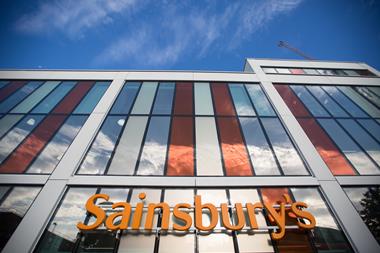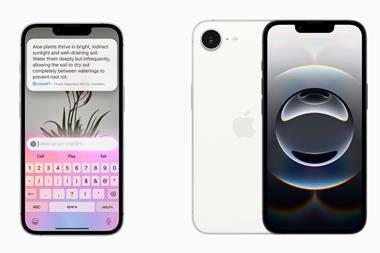Want to know how AI advancements could bring more joy and confidence as well as reduce regret in customer journeys? Google’s Sarah Ashley and Wired Consulting’s Charlie Burton offer a glimpse into the newly launched report Upgrading How We Buy
Thanks to globalisation and digitalisation, the range of brands, products and services is now vast. So it’s no surprise that consumers experience choice overload as they move from the initial purchase trigger to the final decision – a part of the consumer journey often referred to as the ‘messy middle’.
This is where AI can help (and already is).
Our new report, Upgrading How We Buy, gathers insights from global experts across start-ups, academia and enterprise to explore how developments in AI have the potential to transform shopping.
Here we address six key questions posed by the team at Google, delving into the opportunities that lie ahead.
1. How can AI help simplify today’s increasingly complex path to purchase?
Sarah: We discovered that more than two-thirds of shoppers (67%) now find it more difficult to make decisions than they used to – and 82% found AI helpful for reducing research time, locating hard-to-describe items and summarising product details.1 One way AI can help is with tools such as Google Lens, which can help users find products through images. For instance, while watching the Olympics, my mum liked a presenter’s dress but didn’t know the brand. Using Circle to Search, she quickly identified it, leading to the discovery of a new retailer – and a quick purchase.
2. How will AI transform the consumer experience?
Charlie: There’s a lot of interest in what has become termed ‘conversational commerce’. Generative AI is particularly good at understanding natural language and producing relevant responses. Many retailers are interested in how this will enable a new generation of chatbots to function as expert sales advisers, offering customers tailored recommendations based on budget and preferences – and perhaps even completing the sale – making for a more seamless shopping experience.
3. How can retailers use AI to make shopping more fun and interactive?
Sarah: AI has enormous potential to add fun and minimise regret during shopping. For example, Chanel’s virtual make-up try-on introduced me to new products I wasn’t initially seeking, while Ikea’s Place app lets users visualise furniture at home, reducing the chances of dissatisfaction later. As generative AI evolves to become multimodal – capable of processing text, imagery and audio – it will enable consumers to express their preferences more naturally, making it even easier (and more fun) to source products.
4. How should retailers balance AI with the human touch?
Charlie: The report highlights several ways that retailers can blend the strengths of both humans and AI. For example, Victoria’s Secret chief customer officer Chris Rupp explained how the company’s sales associates on the shopfloor are using large language models (LLMs) to quickly find information and improve customer service.
Sarah: Building on that, Victoria’s Secret is a prime example of embracing this synergy. This kind of ‘human-centric’ approach to AI is where I see the biggest potential for retail. It’s not just about automation; it’s about augmentation. We can leverage AI to handle routine tasks, freeing up human employees to focus on building relationships, providing personalised recommendations, and creating those memorable shopping experiences that keep customers coming back for more. Ultimately, while AI enhances the customer journey, human touch and oversight remain crucial to ensure quality and maintain that essential personal connection.
5. How can retailers stay on the front foot with AI?
Charlie: Generative AI is defined more by questions than answers, so it’s hard to forecast exactly what’s coming down the slipway. Staying well-attuned to evolving trends in AI and consumer behaviour will be important. And be prepared to move quickly if you see compelling use cases that are adding real value.
Sarah: Encourage open dialogue within your teams. At Google, we host AI Demo Slams during meetings, where team members present their favourite AI innovations. These sessions foster collaboration, spark creativity and promote continuous learning – all while staying abreast of the latest trends.
6. What is the future of AI in retail?
Sarah: I’m excited to see how AI will revolutionise the retail landscape. Technologies like virtual try-ons can enhance consumer decision-making and reduce returns – a win for both businesses and the planet. From a retail theatre standpoint, imagine walking into a store where AI-powered mirrors analyse your style preferences and instantly suggest outfits tailored to your taste. Or consider AI-generated window displays that adapt in real time based on shoppers’ interests. The possibilities are endless.
Charlie: One important trend our experts highlighted is the rise of AI agents – LLMs that don’t just talk but also ‘do’, autonomously handling multi-step tasks to achieve specific goals. In a retail context, this could mean assisting with purchases or even managing entire transactions. Picture an AI agent planning your trip, booking reservations and handling logistics, or restocking household items by making smart decisions on purchases and delivery. Although still at an early stage of development, this technology is generating significant interest across the industry.
Want to learn more? Download the full Upgrading How We Buy research and gain further insights from Charlie Burton in Google’s AI Consumer Journey series.
Source:
1. Google/Ipsos, AU, BR, CA, FR, DE, IN, IT, JP, MX, NL, SG, KR, ES, TW, TH, U.K., U.S., VN, The Relevance Factor, n=18,003 online shoppers 18+, March 2024

Charlie Burton is the head of editorial content at Wired Consulting

Sarah Ashley is the research and insights manager for EMEA Market Insights at Google































